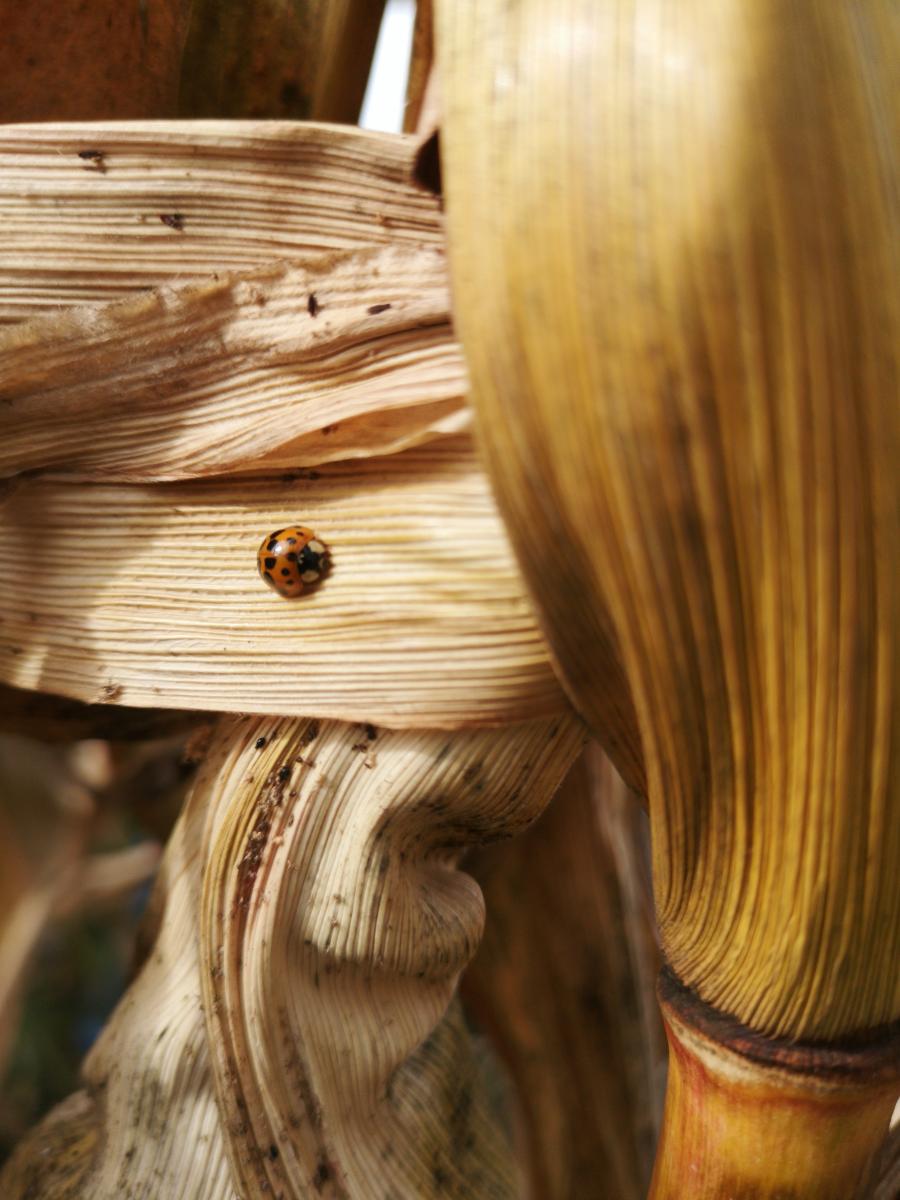Intercropping peanuts with corn promotes natural pest control and boosts peanut yields

China produces the majority of the world's peanuts, and their search to increase sustainable food production has researchers testing non-chemical methods of pest control for key crops. This study found that simply adding corn between the rows of peanuts increases natural pest control of peanut aphids and improves yields, thus providing a non-chemical solution to pest control. The study, recently published in the journal Agriculture, Ecosystems and Environment compared beneficial insect communities in fields planted with only peanut (monoculture) to those where corn (Maize; Zea mays) was intercropped between the rows of peanuts. The researchers found that corn provided important habitat for ladybugs, a natural predator of aphid pests, and that ladybugs preferred to live in corn rows. More than 90% of ladybugs were found supported by corn versus less than 10% by peanuts. Once the corn attracted the ladybugs to the peanut fields, they then fed on nearby peanut aphids. This was confirmed with DNA analyses of the ladybugs’ stomach contents that proved they were eating peanut aphids. Fewer peanuts were lost to aphid damage in fields intercropped with corn. This demonstrates the potential for a farm diversification practice that can reduce reliance on chemical control of pests. Intercropping may therefore be feasible for farmers to implement in both organic and conventional peanut production alike.
Banner Photo Credit: Fang OuYang

